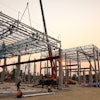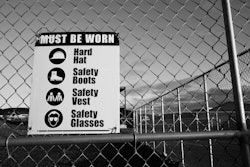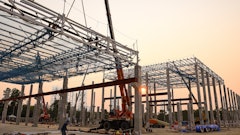
In the construction industry, it’s easy to get caught up by seven-figure contracts and impressive profit margins. But while revenue and profitability are important, they can mask an underlying threat that has taken down many otherwise successful contractors: poor cash flow management.
Profit Isn’t Enough: The Cash Flow Blind Spot
Many business owners equate financial health with revenue and profit. But these metrics, alone can be misleading. A construction firm may report strong profitability, yet struggle to pay suppliers, subcontractors, and employees on time. The root of this problem? A failure to align contract terms with the reality of cash outflows.
To illustrate, let’s talk about Ethan. As a contractor, his company was producing over $1 million in annual profit on less than $10 million in revenue. On paper, the business looked solid. He paid himself well, signed multi-million dollar deals, and enjoyed rapid growth. But despite his profitability, Ethan’s business collapsed. Why? Poor Cash Flow Management.
Ethan’s Biggest Problem: Contract Terms
Ethan’s contracts were labor-intensive, requiring upfront capital for wages and equipment. Most of his payment terms with clients were net 45 to 60 days, while his employees needed to be paid biweekly. The mismatch meant Ethan was constantly fronting cash, long before receiving payments.
Consider a $1 million contract with a 20% profit margin. This deal promised $200,000 in profit over the 12-month term. But the monthly expenses exceeded $66,000, mostly in labor. With 60-day terms, Ethan had to shell out over $130,000 in expenses before seeing a single dollar in cash coming into his business.
It wasn't until the 10th month of the contract that the project became cashflow positive. While Ethan eventually saw the profit, the delayed inflow severely strained his business. This issue compounded as he took on more contracts, each structured with similarly challenging payment terms. The more he grew, the more financial strain his business was under.
Structuring Contracts for Sustainable Growth
Ethan's downfall wasn't a result of poor project performance or lack of work. It was due to neglecting cash flow planning during contract negotiations. Here are several strategies construction businesses can employ to avoid Ethan’s fate:
- Negotiate Front-Loaded Payment Terms: Request more favorable terms for the early phases of the project. For instance, negotiate accelerated payments in the first 6 months to cover startup costs.
- Require Upfront Deposits: A deposit covering initial labor and equipment outlays can ease the cash crunch until the standard payment schedule catches up.
- Use Financing Options Wisely: Consider invoice factoring or short-term financing to bridge the gap between project expenses and payment receipts. However, don’t forget to include the financing costs in your bid to maintain profitability.
- Educate Clients on Cash Realities: Some clients are open to adjusting terms when the reasoning is sound. Explain how payment structure affects your ability to deliver high-quality, timely results.
Cash is King
In business, cash is king. Growth should never come at the expense of sustainability. Just because a contract is profitable, doesn’t mean it will provide positive results. While profitability is a key performance indicator, cash flow is the lifeblood of your business. Growth requires cash. Don’t let your growth be what takes you down. Before you sign your next contract, negotiate terms that will ensure both profitability and positive cash impact.




















